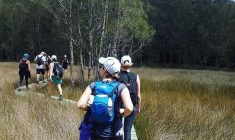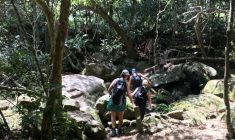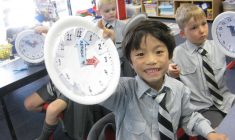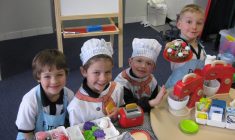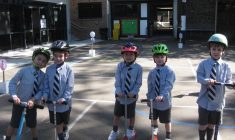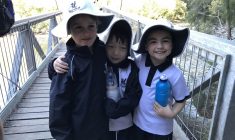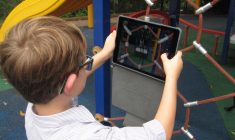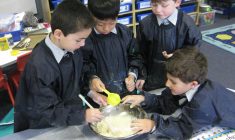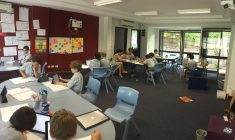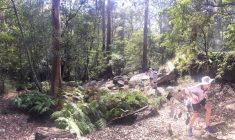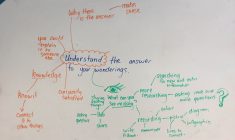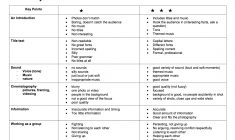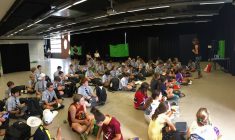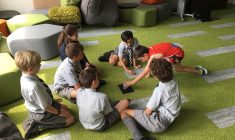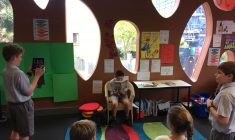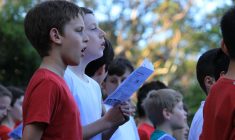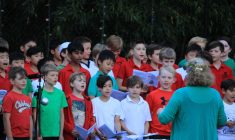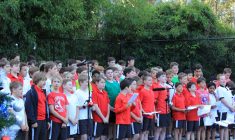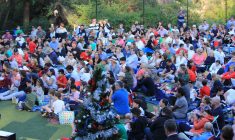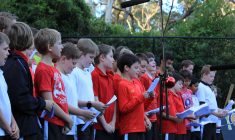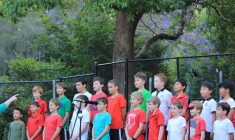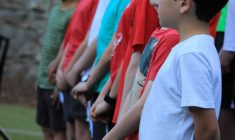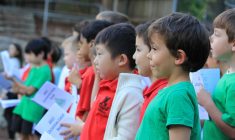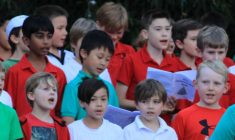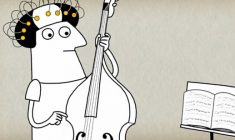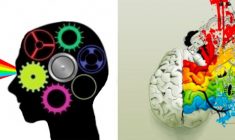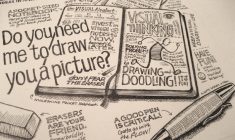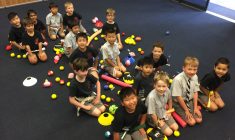A Message from the Head of Lindfield Campus
Smartphones, Social Media and Young Teens
The end of year is fast approaching and the holidays are a wonderful time for our Lindfield boys and families to recharge and enjoy some well-earned time off. It is also a time when busy parents tend to let their boys spend more time on tablets and smartphones as they struggle to fit in time with the pace of modern life and having their boys at home throughout the holidays.
This article from The Atlantic discusses the impact and changes that social media and technology are having on our young people. It is interesting to reflect about the changes that technology is having on adults and how our children model what is modelled for them. We also need to be mindful of the way we interact with technology and social media.
In this article, psychologist Jean Twenge (San Diego State University) describes her conversation with a 13-year-old in Houston, who said she spent most of the summer hanging out alone in her room communicating with friends on her iPhone. “Unlike the teens of my generation,” says Twenge, “who might have spent an evening tying up the family landline with gossip, they talk on Snapchat, the smartphone app that allows users to send pictures and videos that quickly disappear. They make sure to keep up with Snapstreaks, which show how many days in a row they have Snapchatted with each other.” The girl said to Twenge, “We don’t have a choice to know any life without iPads or iPhones. I think we like our phones more than we like actual people… My bed has, like, an imprint of my body.” Like many teens, she has her phone with her at all times, including when she’s asleep.
Twenge has researched generational trends over the last 25 years – boomers turning on, tuning in, dropping out; Generation X’s yen for independence and endless adolescence; the highly individualistic Millennials – and has been struck by the abrupt change in behavior in the current generation of young teens, especially how they spend their time. Twenge traces the shift to around 2009, when the percentage of Americans with a smartphone passed 50 percent, and the rise of social media. iGen is her term for this cohort – born between 1995 and 2012, own a smartphone and perhaps a tablet, got an Instagram account before high school, don’t remember being without the Internet. These phenomena have “radically changed every aspect of teenagers’ lives,” says Twenge, “from the nature of their social interactions to their mental health.” And this is true of all socioeconomic levels in every part of the nation. “Where there are cell towers, there are teens living their lives on their smartphone.”
When looking at generational changes, she says, it’s important to avoid nostalgia and acknowledge what’s positive. iGen teens are physically safer because they party less, drive less (one quarter of high-school seniors don’t have a license), drink less, have less sex, have fewer teen pregnancies, and commit fewer homicides. On the worrisome side, iGen teens have fewer after-school jobs, do less in-person hanging out with friends, date less, sleep less (under seven hours a night in many cases, compared to the recommended nine hours), are more dependent on their parents for spending money and transportation, and talk less with other family members. The Houston 13-year-old said of her friends, “They just say ‘Okay, okay, whatever’ while they’re on their phones. They don’t pay attention to their family.”
iGen teens have more free time than previous generations, says Twenge. “So what are they doing with all that time? They are on their phone, in their room, alone and often distressed.” Which may explain this cohort’s much higher rate of depression and suicide. “There is compelling evidence,” concludes Twenge, “that the devices we’ve placed in young people’s hands are having profound effects on their lives – and making them seriously unhappy.” A recent survey showed that the more time teens spend on screen activities, the unhappier they are, and the less time they spend on screens and the more time physically with other people, the happier they are.
But is this cause and effect? Could unhappy teens be drawn to lonely screen-based activities? Not so, says another study, which makes clear that there is a cause and effect relationship between time spent on devices and sleep deprivation, unhappiness, and depression. Typical statements: “A lot of times I feel lonely.” “I often feel left out of things.” “I often wish I had more good friends.” Of course some teens are socially active on screen and in person, and they do relatively well. It’s those with an unfavorable ratio – more screen time and less in-person time – who are hurting. There has been a sharp increase in teens with depressive symptoms from 2012 to 2015: a 21 percent increase for boys, a 50 percent increase for girls. Suicides have also increased, doubling among boys 12-14 years old from 2007 to 2015, tripling among girls.
Why such a strong link between screen use and depression? “Today’s teens may go to fewer parties and spend less time together in person,” says Twenge, “but when they do congregate, they document their hangouts relentlessly – on Snapchat, Instagram, Facebook. Those not invited to come along are keenly aware of it.” Teens who post activities are anxious as well, waiting to see how many “likes” and comments they get. All this is especially true for girls, who use social media more heavily and who are more likely to engage in cyberbullying, ostracizing and excluding other girls.
The impact of constant electronic contact is especially pronounced on sleep, and this may be another factor. “Sleep deprivation is linked to myriad issues,” says Twenge, “including compromised thinking and reasoning, susceptibility to illness, weight gain, and high blood pressure. It also affects mood: People who don’t sleep enough are prone to depression and anxiety.” It’s hard to pin down causation, but “the smartphone, its blue light glowing in the dark, is likely playing a nefarious role.”
All this may result in iGen teens growing up with more than their fair share of social disabilities and depression as adults. “Adolescence is a key time for developing social skills,” says Twenge; “as teens spend less time with their friends face-to-face, they have fewer opportunities to practice them. In the next decade, we may see more adults who know just the right emoji for a situation, but not the right facial expression.”
Some teens are tuning in to the problem and taking matters into their own hands. The girl in Houston described what it felt like to be with a friend in person and have the friend looking at a device instead of at her. “I’m trying to talk to them about something, and they don’t actually look at my face,” she said. “They’re looking at their phone, or they’re looking at their Apple Watch… It hurts… I could be talking about something super important to me, and they wouldn’t even be listening.” She described this happening with a friend, who was texting with her boyfriend and saying, “Uh-huh, yeah, whatever.” The Houston girl took her friend’s cell phone and threw it at the wall.
“Has the Smartphone Destroyed a Generation?” by Jean Twenge in The Atlantic, September 2017 (Vol. 320, #2, p. 58-65),https://www.theatlantic.com/magazine/archive/2017/09/has-the-smartphone-destroyed-a-generation/534198/ Cited from The Marshall Memo, Issue 700, Aug 2017
Ben Barrington-Higgs





